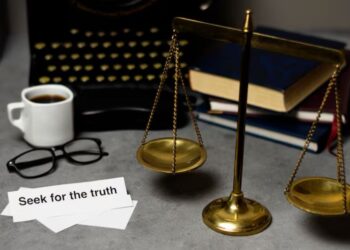Going to court for injuries caused by a defective product has been common practice for a long time now. When successful, the claimant recovers compensation for medical bills, lost wages, pain, and non-economic damages, including pain and suffering, physiological pain, emotional distress, disfigurement, and disability.
However, recent years have seen increased product liability litigation where physical injuries are not a factor. These lawsuits follow a depreciation-based injury theory where the plaintiffs’ bar is increasingly trying to use the theory to assert a case’s standing in bringing a product liability lawsuit. Navigating all this by yourself can be tough, which is why getting in touch with attorney Rich Godshall of Ostroff Godshall Injury and Accident Lawyers is a great idea.
Understanding the Depreciation-Based Injury Theory
Under this theory, a person who buys a defective product that depreciates because of a manufacturing defect can claim that they have suffered an injury, although not physical, and thus have sufficient standing to bring a lawsuit.
The reasoning behind this theory is that a product sold with a defect or fault is not worth as much as it would be if it were faultless. So, the plaintiff argues that the defect reduces the product’s value, causing them financial injury and mental strain.
In the lawsuit, the claimants, through their lawyers, seek monetary damages for overpaying for the product. They argue that they would not have paid the price they did for the product if they had prior knowledge of the defect. They can also argue that they would have gone for other defect-free alternatives.
Application of This Theory
Proving the specifics of depreciation in a product can be pretty challenging for plaintiffs and their attorneys. So they almost always fall back to the safest argument: they paid for something they did not receive. Basically, they argue that they paid for the functional product but received a faulty one.
If they choose to prove depreciation, the court can conclude that determining product depreciation should be left to the experts rather than handled in the pleading stage. This approach can either cause the case to lose its standing or have the experts affirm it.
Example Cases
In most instances, depreciation theory-based lawsuits have been applied in cases where product manufacturers misrepresented the facts, resulting in customers paying premium prices for less than premium quality for their products. For example, in Victor v. R.C. Bigelow, Inc., the court ruled that Victor had standing to sue Bigelow for misrepresentation of facts in their branding even if Victor never purchased any of their products.
Another example is the In re Clorox Consumer Litig., 2013, where the court concluded that the plaintiff’s case had standing for a lawsuit where they argued that the product’s advertising was misleading. In their advertising, Clorox claimed that their product Fresh Step was more effective than other cat litter in eliminating cat odor and that cats preferred it over other products in the market.
What This Meant To Product Manufacturers
As the plaintiffs’ bar continues to test this theory, it is expected to evolve. It is a hot area in product liability that all players need to watch closely. It is fair to say that it is a good thing in that it helps protect consumers because producers will be more careful about misrepresenting facts.
However, it can also be a scary precedent that could result in rising class action lawsuits for minor issues. The examples highlighted in this post are in Chicago, but you will likely see this trend spill over to other jurisdictions, so it is all a matter of waiting and watching. The courts must also carefully consider this trend’s impact and raise the bar to counter abuse.
Conclusion
Depreciation-based injury theory in product liability allows plaintiffs to claim standing by arguing that a product’s defect reduces its value, even if no physical harm occurs. This theory broadens the scope of legal protection, emphasizing financial loss as a form of injury. Courts increasingly recognize it, shifting focus from physical damage to economic impact, thereby expanding consumer rights in defective product cases.










